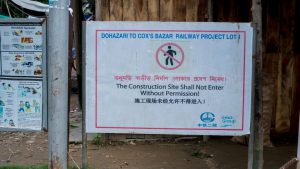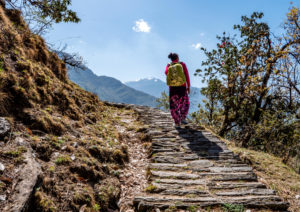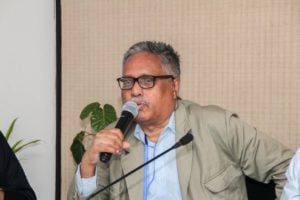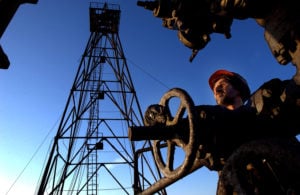Kanhai Singh, a resident of the Ledgain village in the Latehar district of Jharkhand, has been suffering sleepless nights. He has nightmares of wild elephants ravaging his crops and damaging his house, elephants forced out of the nearby Palamu Tiger Reserve (PTR) by the widening of the rail line inside the forest.
The 45-year-old farmer has been urging the authorities to shift the 97-year-old existing double track to ensure the safety of wildlife and of villagers living close by. Local officials of the forest department have urged the same and have pointed out that the measure would save a lot of money too. But despite these objections, the railways managers are adding a third track to the 291 km rail line, which was built in 1924 from Patratu to Son Nagar to carry coal. They do not have permission to lay the track over the 11 km stretch of the line that lies within the PTR, but are going ahead with the rest of the work.
The third track is also meant to carry coal, a major source of revenue for the state government of Jharkhand in eastern India.

Singh is among the over 25,000 residents of 20 villages who fear they will be affected as wild animals – especially elephants, gaur (Indian bison) and deer – are scared away by more trains and move into nearby farms and villages. A majority of these residents are from indigenous communities. Spread across 1,050 sq. km, PTR spans the Palamu and Latehar districts of Jharkhand. It is a biodiversity hotspot and forms part of Betla National Park. As a tiger reserve, it is supposed to receive the highest level of protection from any disturbance.
A train every five minutes
“Wild animals, particularly elephants, cross over the rail lines. A third line will not only increase the risk of accidents because of rise in frequency of trains but would also delay the crossover time of elephants,” feared Singh. “They may then deviate towards the villages, wreaking havoc on our crops and houses.”

Environmentalists fear the same. “The construction of the third railway line would stop the seasonal movement of elephants from Baresarh forest to Betla and back,” said D.S. Srivastava, elephant expert and secretary of the Nature Conservation Society in Jharkhand. Srivastava, who is based in the nearby town Daltonganj, said a third track “would also increase man-animal conflict as elephants will get diverted from their route and could enter villages surrounding the core zone [of PTR].”
“It will become one of the busiest tracks with the laying of a third railway line,” he said, adding that wildlife would suffer as a result. “Over 180 pairs of trains already run through the reserve every 24 hours, with an average frequency of five minutes, and is likely to increase as the North Karanpura coal block, the biggest in India, is expected to become operational soon.”
Srivastava explained that rail lines passing through forest reserves are required to seek legal permission from the advisory body National Board of Wildlife, but the project is still going ahead without it.
Meaningless speed limit
There is a speed limit of 25 km per hour for all trains passing through core areas of forest reserves anywhere in India, to reduce the possibility of running down wild animals. But the track within PTR is on an incline. Freight trains with multiple wagons cannot ascend the slope if drivers stick to this speed limit.
“It often becomes difficult for the loco pilots to reduce speed as the line is a bit steep and the trains have to maintain a speed to pass,” said a railway lineman at a level crossing. “Most of the trains run far above the speed limit. The addition of a third line will certainly prove dangerous to animals.”
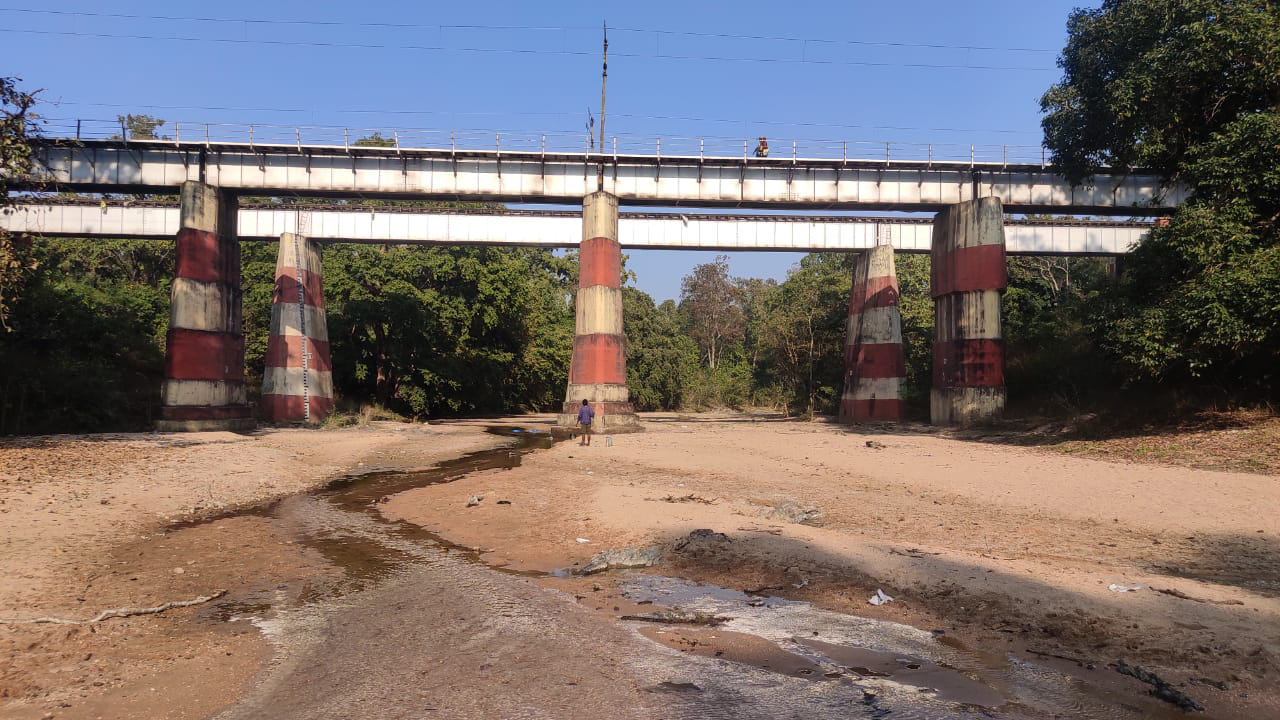
Local officials with the forest department have been tracking animals run down by trains within PTR since 1980. Their most recent record shows four spotted deer run over by a goods train on August 31 last year. Two were pregnant.
In 2011, a male elephant died following a collision with the Palamu express, while a female elephant lost her life after being hit by a goods train in 2005.
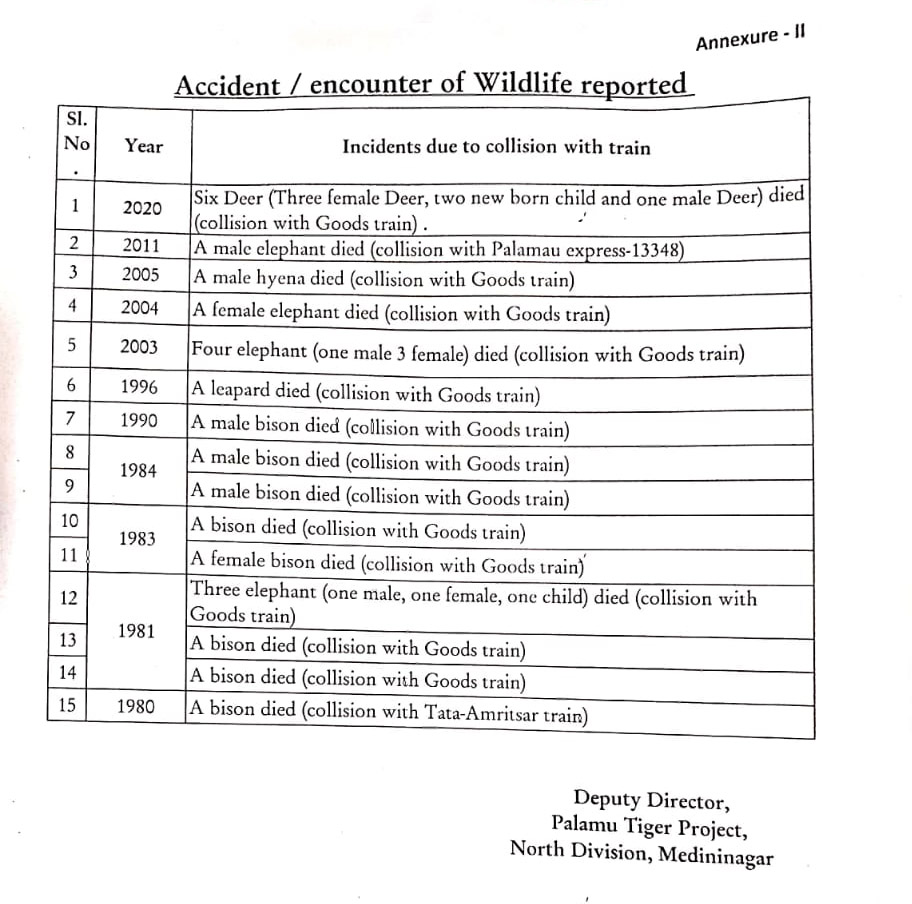
Environmental activists claim that aside from elephants and deer, hyenas, gaurs other animals are also killed on the tracks, but most deaths go unreported.
Forest department alternative
Senior forest department officials say they have suggested another route, but the train operating company have declared it ‘non-feasible’. Kumar Ashish, deputy director of PTR, told The Third Pole: “We are not against the construction of the railway line as it would play an important role in development but have suggested to the railways [operators] to shift the existing tracks from the core zone to the fringes of the PTR.”
A third line in the heart of the tiger reserve would be a needlessly expensive affair, Ashish added. It would cost the equivalent of USD 82 million, while shifting the tracks to the fringes of the forest would cost the equivalent of USD 62 million.
The official view
Senior railways officials conceded that a delay in permission has stalled work in the PTR core zone. Vishal Anand, chief project manager at Rail Vikas Nigam Limited, the government-owned agency executing the project, said that the development of new tracks has been progressing, except for in the core stretch for which permissions from the environment ministry are still pending. “The work will start as soon as the order comes,” he said.
Nigam said it was up to the agency to decide if the tracks would be shifted. “It is not easy to shift the railway line to another location as it has been there for nearly a hundred years,” he explained. “We are currently focusing on the third line, but the decision to potentially shift the tracks has to be taken by the senior management of the railways.”
![<p>Long freight trains carrying coal often pass through the Palamu Tiger Reserve [Image by: Gurvinder Singh]</p>](https://dialogue.earth/content/uploads/2021/03/55811a1c-d6c1-47e8-9fdf-ad0d8afba441-300x169.jpg)


![Peafowls have become a menace in LunchaKameru village in Sumbuk block of South Sikkim, so every morning desperate villagers go to an open patch of land in forest to spread feed for peafowls in the hope that their crops will be spared. They have also constructed water basins out of bamboo [image by: Nidhi Jamwal]](https://dialogue.earth/content/uploads/2018/08/HWC1-300x172.jpg)

